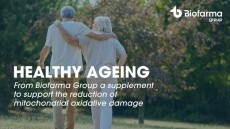Green tea supplements influence facial development of Downs syndrome children, study suggests

Belgian and Spanish scientists report that the green tea compound is able to inhibit the activity of DYRK1A, a gene that appears to alter brain and bone development in individuals with Down syndrome.
This gene is located on the third copy of chromosome 21 that is responsible for an overexpression of certain genes that lead to the physical and intellectual disabilities characteristic of the condition.
Referring to initial studies on mice, Greetje Vande Velde says, "The low dose treatment had a positive effect on mice that are a model of Down syndrome. Sixty percent of them showed a facial shape similar to the control group."
"The high dose treatment, however, generated very mixed results, and even disrupted normal facial development in some cases, causing additional dysmorphology,” adds Vande Velde, a Professor of Medicine at the Catholic University of Leuven (KU Leuven) and co-lead author of the study.
“This occurred in all mice, in the model of Down syndrome as well as in the control group."
Green Tea Extracts (GTE) enriched in catechins such as EGCG have emerged as a promising therapeutic tool for individuals with Down syndrome.
Although the effect of GTE-EGCG is not specific, and different catechins or combinations of catechins may have different effects on Down syndrome phenotypes, evidence suggests that the ability of GTE-EGCG to inhibit the excess kinase activity of DYRK1A may play a prominent role.
A number of target pathways for EGCG have been suggested and include the inhibition of DYRK1A related immune response, which are overexpressed in Down syndrome.
These pathways may play a role as regulators of vertebrate, skeletal, muscular and cardiac development.
Mice and children
In collaboration with the University of Barcelona, the Centre for Genomic Regulation (CRG) and the European Molecular Biology Laboratory (EMBL), the team followed up the mice study with an observational study involving 287 children.
These children were aged between 0 and 18 years and included children with Downs syndrome who did (sample size = 13) or didn't (63) receive EGCG supplementation.
In the GTE-EGCG treated group of children with Downs syndrome, parents gave their children commercially available green tea extracts containing EGCG obtained over the counter, for variable periods and at different doses.
Thus, the study participants did not follow a systematic GTE-EGCG usage pattern, as the dosage, onset, and treatment duration were not standardised.
3D models of their faces were then created using 21 facial markers, and the distances between them.
“In the youngest group between 0 and 3 years, we observed that 57% of the linear distances are significantly different when you compare the faces of children with Downs syndrome that never received the treatment to those of children that do not have Down syndrome,” notes Neus Martínez-Abadías, Professor at the University of Barcelona and co-lead author of the study.
“For babies and toddlers who did receive EGCG treatment, this difference was much smaller, only 25%,” he adds.
“After green tea supplementation, the facial dysmorphology decreases and the children with or without Down syndrome look more alike."
Professor Martínez-Abadías goes on to highlight a lack of a similar effect in the adolescent group commenting that, “even when treated with green tea extracts, children with Down syndrome still show a difference of more than 50% compared to the control group.
“These findings suggest that the green tea supplements only affect facial development when they are administered in the early stages of life when the face and skull are rapidly growing," he says.
More insight needed
Both Professors agree that more work needs to be carried out to validate these findings especially considering the preliminary and observational nature of the work.
“Much more research is necessary to evaluate the effects of EGCG-containing supplements, the appropriate dose and their therapeutic potential in general,” comments Professor Vande Velde.
“We also need to take into the account possible effects on other organs and systems, not just on the development of the face. This requires first more basic research in the lab with mice, and then clinical studies with more participants and controlled use of these supplements."
"EGCG products are commercially available and they are used regularly as a general health-promoting compounds,” points out Professor Martínez-Abadías.
“It's important to follow the European Food Safety Authority recommendations regarding the maximal intake and to always consult a physician before taking the supplements.”
Source: Scientific Reports
Published online: DOI: 10.1038/s41598-021-83757-1
“Green tea extracts containing epigallocatechin-3-gallate modulate facial development in Down syndrome.”
Authors: J. Starbuck et al















